コラム
落合憲弘
John Sypal
タカザワケンジ
なぎら健壱

Until now, these Photo Show Reports have focused on a single exhibition. However, considering both the number of photo exhibitions held on any given day in Tokyo- not to mention the proximity of galleries to one another- it’s easy to see multiple exhibitions.
With this in mind, I’d like to share a few exhibition visits from a single (rainy) Saturday afternoon in May.
これまで「Exhibition Report」では、一回につきひとつの写真展に焦点をあててきました。 しかし、東京では1日に開催される写真展の数が多く、また、ギャラリー同士の距離も近いため、1日に複数の写真展を見ることは容易です。ですので今回は、5月のある雨の土曜日の午後に訪れた写真展を3つほど紹介したいと思います。
1,
Michi Nakano "Utsusemi"
中野 道「うつせみ」
May 10 – 25, 2025, BOOTLEG Gallery
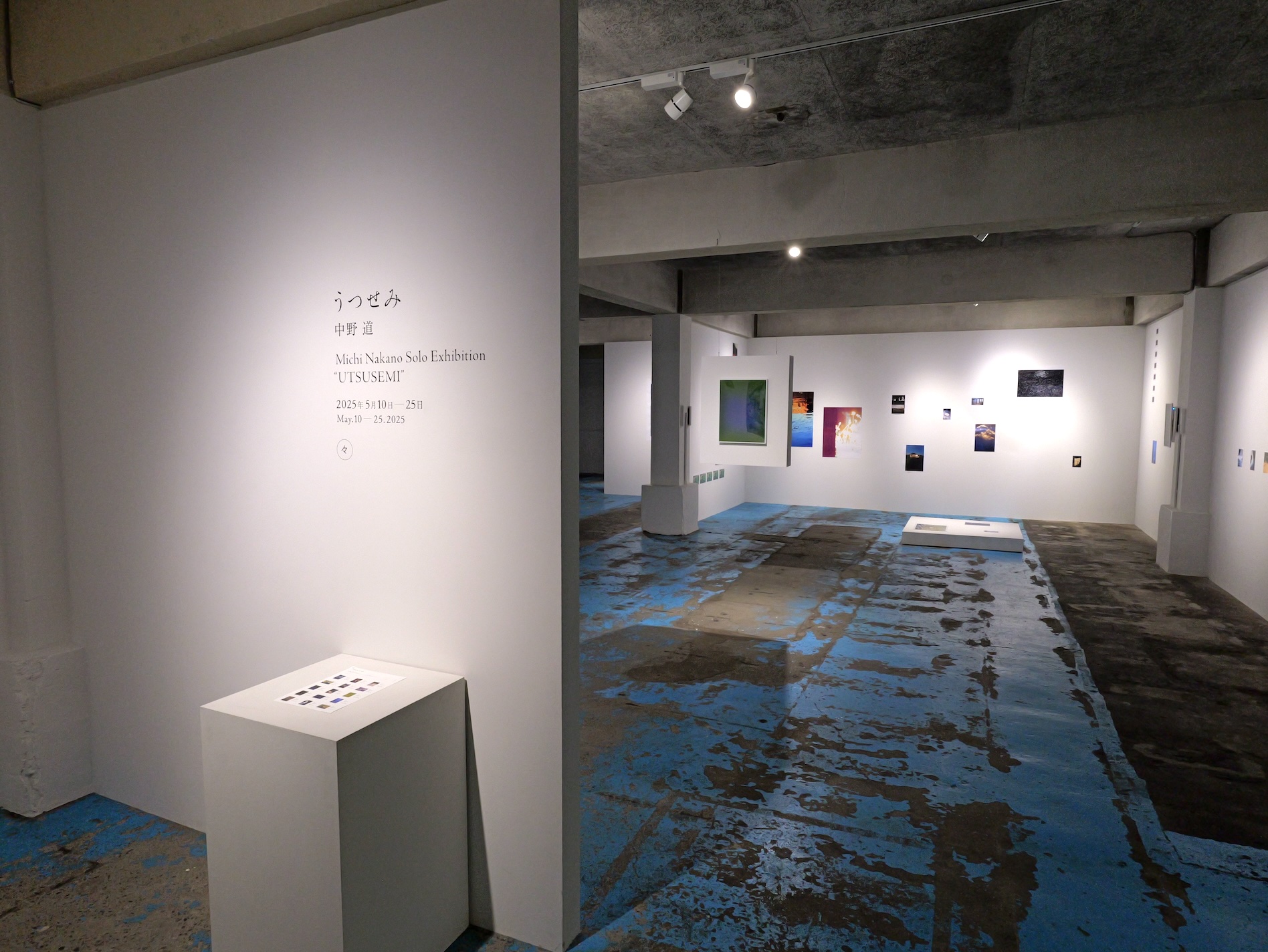
Bootleg gallery is a surprisingly sprawling space tucked away on a backstreet between Edogawabashi and Kagurazaka. Once home to a bookbinding factory, the cavernous venue is owned by the design firm Bootleg, which has its offices above.
I made my first visit to Bootleg on invitation of photographer Michi Nakano, who was holding his exhibition Utsusemi there from May 10- 25th. Utsusemi made good use of the gallery’s 200 square meters with a multitude of color prints of all sizes, a video installation, and, in a corner in back, a television with a camcorder pointed directly at visitors themselves.
This was the first time I’ve seen viewers incorporated into an exhibition before.
江戸川橋と神楽坂の間の裏通りにひっそりと佇む「BOOTLEG Gallery」は、驚くほど広大なスペースです。かつて製本工場があったこの洞窟のような場所は、デザイン会社BOOTLEGが所有するもので、階上にはオフィスがあるそうです。 今回私が初めてBOOTLEG Galleryを訪れることになったのは、写真家・中野道さんの展覧会「うつせみ」が開催されていたからです。本展覧会では、ギャラリーの200平方メートルのスペースを有効に使い、大小さまざまなカラープリント、ビデオインスタレーション、そして奥の一角には、来場者自身に直接ビデオカメラを向けたテレビが設置されていました。このような空間で観客が展覧会に組み込まれているのを見たのは初めてでした。
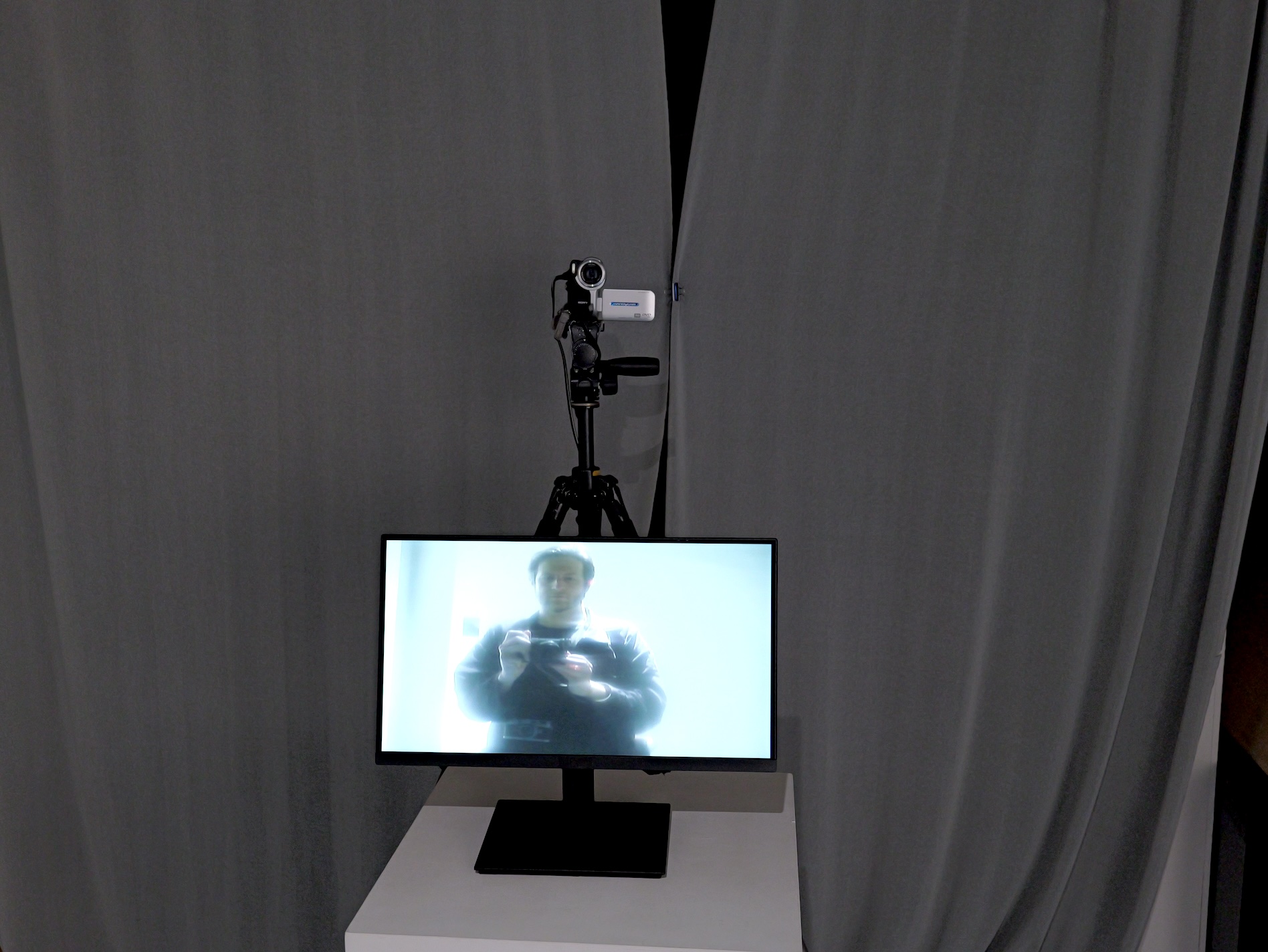
Nakano says that he is interested in what lies between that is snipped out with a camera from the flow of time for (photographic) preservation and what’s left behind. Thoughts of this come to mind when seeing yourself enter and exit the camcorder’s field of view on the TV screen. These thoughts are compounded when, in another part of the gallery, viewing old camcorder footage taken by Nakano’s father of the infant-artist in his mother’s arms in a pool- particularly when stills have been selected, printed, and taped to the wall.
中野さんは、時間の流れをカメラで切り取り保存されたものと、残されたものとの間にあるものに興味があるといいます。テレビ画面に映し出されたビデオカメラの画角に自分が出入りしているのを見ると、その言葉が思い浮かんできます。
またギャラリーの別の空間では中野さんの父親がビデオカメラで撮影した、作者がプールの中で母親に抱かれている幼少期の映像が流れています。そこから切り取られたスチール(静止画)がプリントされ、壁に貼られているのを見ると、作者の言葉から感じる思いはさらに強くなっていくのです。
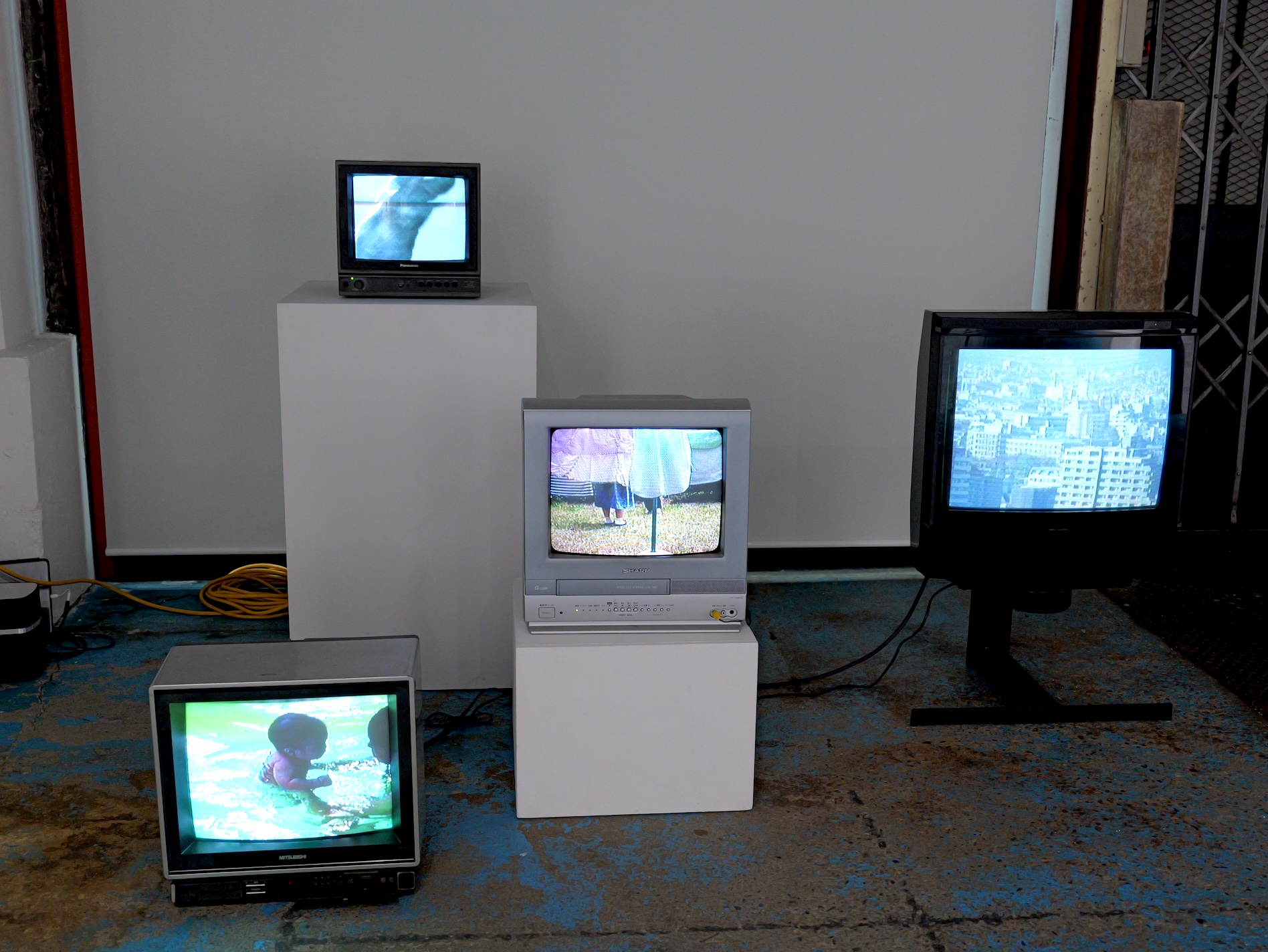
The issue of selection- and the general improbability of any moment/photograph being brought to paper is fascinating- but I was particularly moved by Nakano’s delicate sense of light. I don’t mean “light” as in “lighting technique”, but the phenomena as subject matter. The radiance that appears in his photographs is dazzling, ethereal, and, even when banal -as sunlight glinting off of a neighbor’s window- startling beautiful.
Most often, photographs are presented as moments frozen in time- but Nakano’s timeless images are frozen in light.
セレクトや、どんな瞬間や写真も紙という物質になることによる、ある種のありえなさも魅力的なのですが、私は中野さんの繊細な光の感覚に特に心を動かされました。ライティングのテクニックという意味での 「光」ではなく、被写体としての 「現象」として彼の写真に現れる輝きは、まばゆく、幽玄であり、隣の家の窓から差し込む陽光のようにありふれたものであっても、驚くほど美しいのです。
多くの場合、写真は時間を凍結させた瞬間として表現されますが、中野さんのタイムレスなイメージは光を凍結させたものだと感じます。
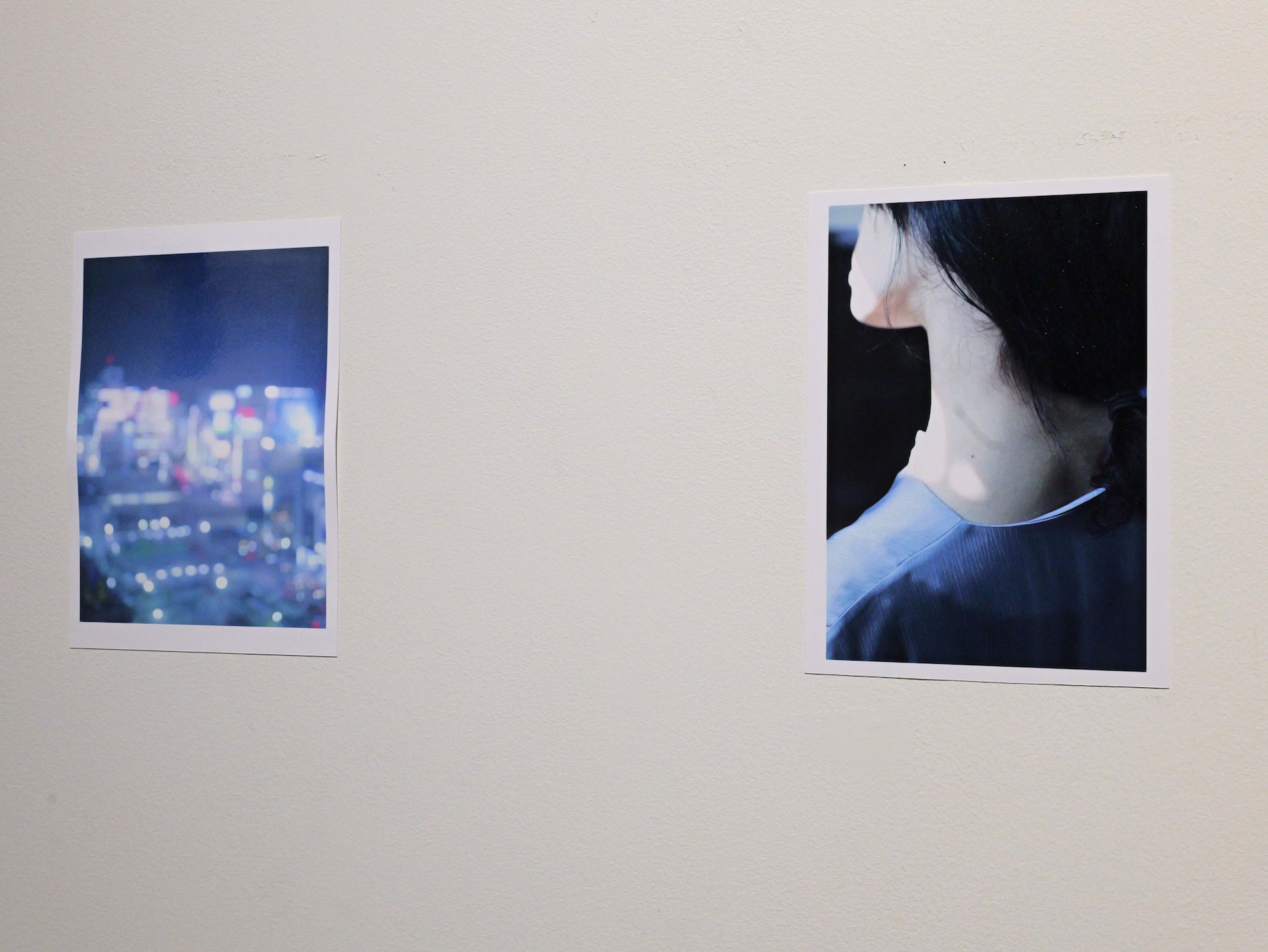
2,
Hiroyoshi Yamazaki, Takeshi Takeda, and Keijiro Kai "This is Our Land, Vol.II"
山崎弘義・竹田武史・甲斐啓二郎 写真展 「地とひと Vol.Ⅱ」
May 9 (Fri) — June 21 (Sat), 2025, Zen Foto Gallery
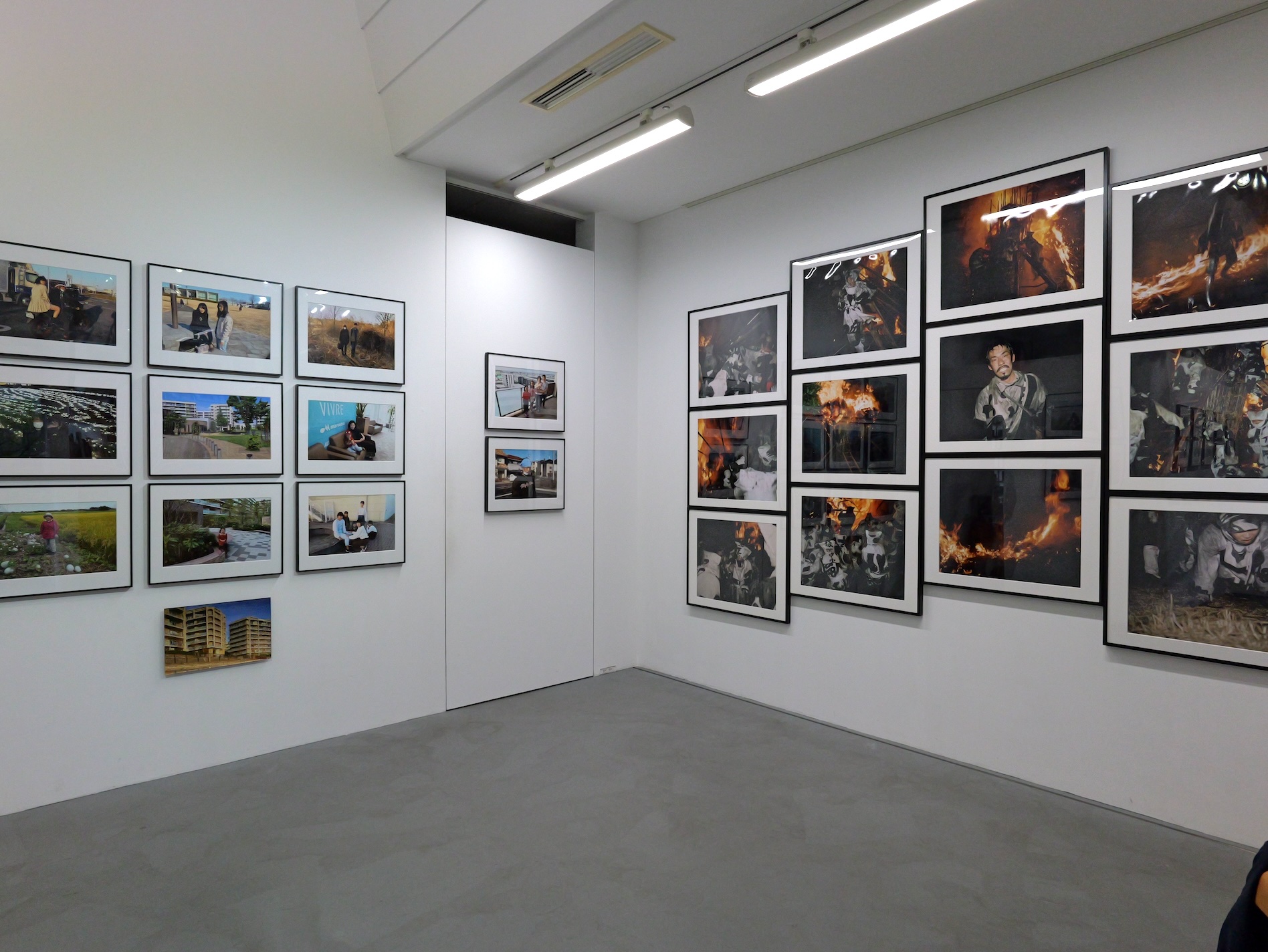
This three-man exhibition coincides with the recent publications of each of the three artist’s photobooks. Tying the show together is how photographer has focused keenly (and literally) on a particular place.
山崎弘義・竹田武史・甲斐啓二郎による3人展ですが、3人の作家はそれぞれ最近写真集を出版したばかりです。この展覧会を通して、写真家がいかに特定の場所に鋭く焦点を当ててきたかが表現されています。
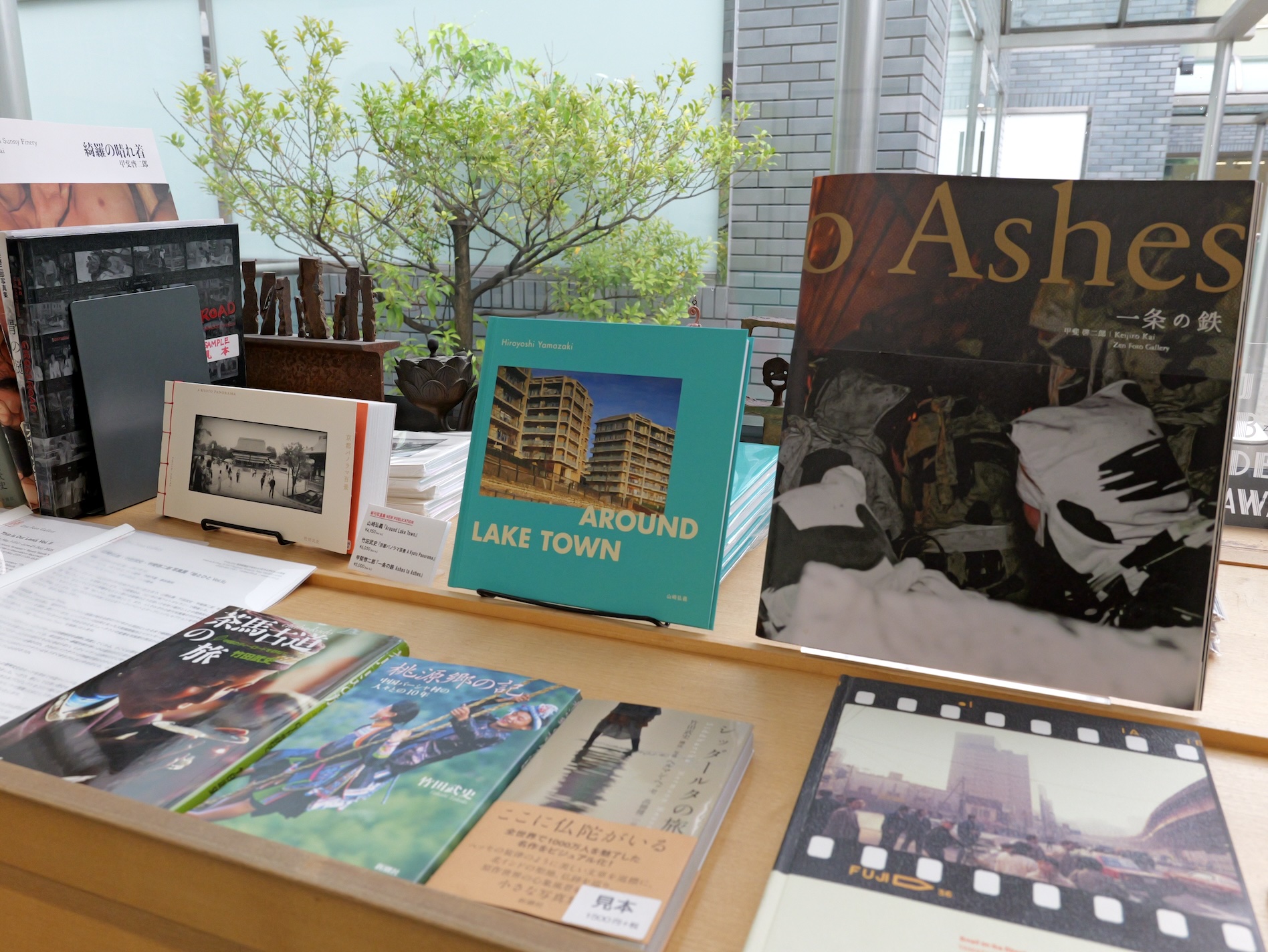
For almost thirty years, Hiroyoshi Yamazaki has continued a documentation of Koshigaya Laketown, a massive example of urban sprawl-mall that has risen from the fields of Saitama, just north of Tokyo. This gigantic beige, family-friendly and chain-store, big-box commercial center, with its carefully plotted parking lots and Sim-City-esque landscaping, is a far cry from the quaint/futuristic views of Japan that populate the imagination of the world.
Laketown, in its extravagant, capitalistic blandness, represents what a fair amount of Japan’s urban areas are like- and the future which developers and conglomerates wish to redesign the country to. It’s also a place ignored by other photographers. The precious, ongoing glimpses of individuals captured within Yamazaki’s important body of work are illuminating- and, in my opinion, critical for pondering, if not understanding, contemporary Japanese (sub)urban life.
山崎弘義は、東京のすぐ北に位置する埼玉の田園地帯に出現した巨大な都市型ショッピングモール「越谷レイクタウン」の記録を30年近く続けてきました。このファミリー向け大型商業施設は、巨大なベージュ色で、入念に区画整理された駐車場、シムシティ風の景観で、世界中で想像される日本ならではの古風さ、あるいは未来的な景観とはかけ離れています。
レイクタウンは、贅沢で資本主義的な無機質さにおいて、日本の都市部のかなりの部分がそうであること、そしてデベロッパーやコングロマリットが日本を再設計したいと望む未来を象徴しています。それはまた、他の写真家が無視する場所でもあります。山崎さんの作品群から垣間見える貴重な個人の姿は、現代日本の(サブ)アーバンライフを熟考するためには欠かせないものだと、私は思っています。

If Yamazaki’s project takes on a location ignored, Takeshi Takeda, on the other hand, has tackled a different beast: The beautiful, over-touristed, over-photographed(?) city of Kyoto.
Having traveled across- and photographing- Asia, Takeda returned to his hometown as means to investigate the roots of his sensibilities, and culture. His partner on this path was a unique 35mm camera that takes 120-degree panoramas with a swing-lens. With significantly wider ratio than a standard 35mm frame, this camera scooped up -across Japan’s four seasons- one tract of landscape and people at a time.
To me, the swooping distortion that this camera’s lens imparts on its pictures pushes them away from Documentation and into the realm of Poetry. . .
山崎さんのプロジェクトがロケーションを無視したものだとすれば、竹田武史さんはそれとは違う土地に焦点を当てています。 美しく、観光地化され、写真に撮られすぎた街「京都」です。
アジアを旅し、撮影してきた竹田さんは、自分の感性や文化のルーツを探るために故郷に戻りました。 その相棒となったのが、スイングレンズで120度のパノラマを撮影するユニークな35mmカメラです。通常の35mmフレームよりかなりワイドな比率で、日本の四季折々の風景や人物を一枚一枚すくい上げています。
私にとって、このカメラのレンズが写真に与える、急降下するような歪みは、写真を記録から「詩」の領域へと押しやっているように感じるのです。
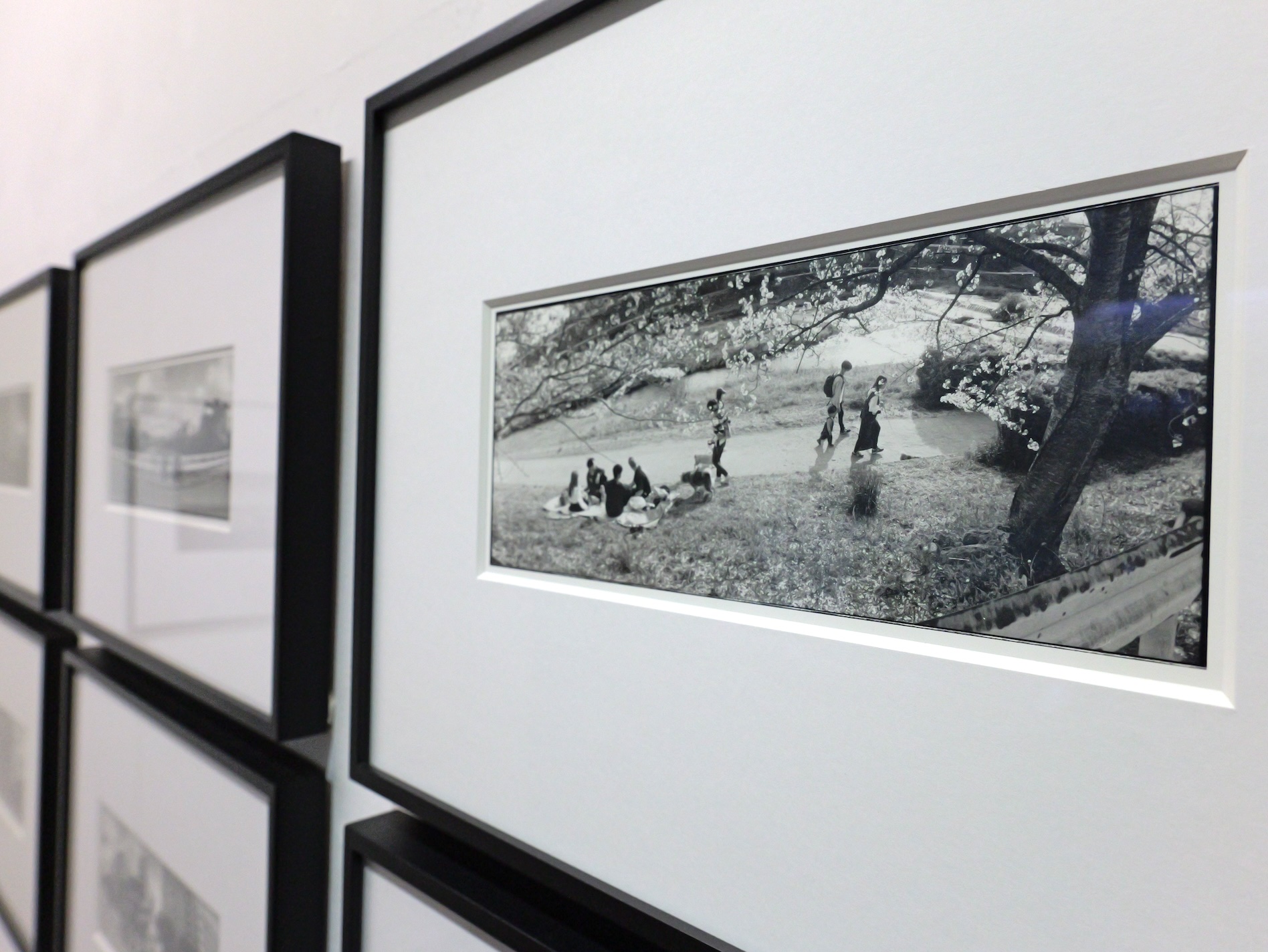
The work of Keijiro Kai focuses on one particular location, the Toba Shimmeisha Shrine in Nishio, Aichi Prefecture, to be precise. However, location here ranks below spectacle in importance- spectacle which itself is intertwined with time. The pictures are taken within the mayhem and fervor of a fire festival that has been held on the shrine’s grounds for over 1,200 years. While humans are mortal, the essence of fire is not- and Kai notes in his statement that the flames which the participants immerse themselves in (and are singed by) is the same which their ancestors experienced. Time travel with a Mamiya 7!
Kai’s chaotic photographs are at first flashes of cultural insight- and, upon further consideration, evidence of suppressed, atavistic emotions tying individuals across humanity and the ages.
甲斐啓二郎さんの作品は、ある特定の場所、正確には愛知県西尾市の鳥羽神明社に焦点を当てています。 しかしこの場所の重要性は、スペクタクルよりも下位に位置づけられます。スペクタクル自体が時間と絡み合っているのです。甲斐さんによる写真は、1200年以上も前から神社の境内で行われている火祭りの騒々しさと熱気の中で撮影されたもの。人間は死すべき存在ですが、火の本質はそうではありません。参加者たちが身を浸し焼かれる炎は、彼らの祖先が経験したものと同じであると、甲斐さんは作中で述べています。まさにマミヤ7によるタイムトラベルです!
甲斐さんの混沌とした写真は、最初は文化的洞察の閃光であり、さらによく考えてみると、人類と時代を超えて個人を結びつける、抑圧された原初的な感情の証拠なのです。

3,
FUJIFILM SQUARE Photo History Museum Photo Exhibition
Hiromi Tsuchida "ZOKUSHIN / Gods of the Earth"
土田ヒロミ写真展「俗神」
March 27 – June 30, 2025, フジフイルム スクエア 写真歴史博物館

Fujifilm presents a rare opportunity to experience a selection of vintage prints of Hiromi Tsuchida’s landmark series Zokushin. Taken in the late 1960s to the mid 1970s, Tsuchida left the Tokyo to travel Japan and investigate (and revel in) the spiritual, visible essence and celebrations of the nation’s folk culture.
フジフイルム スクエア 写真歴史博物館では、土田ヒロミさんの画期的なシリーズ「俗神」のヴィンテージ・プリントを体験できる貴重な機会を提供しています。本作は1960年代後半から1970年代半ばにかけて撮影されたものです。当時土田さんは東京を離れて日本全国を旅し、日本の民俗文化と祝祭の精神を、身体とカメラ、本質とを楽しみながら調査しました。
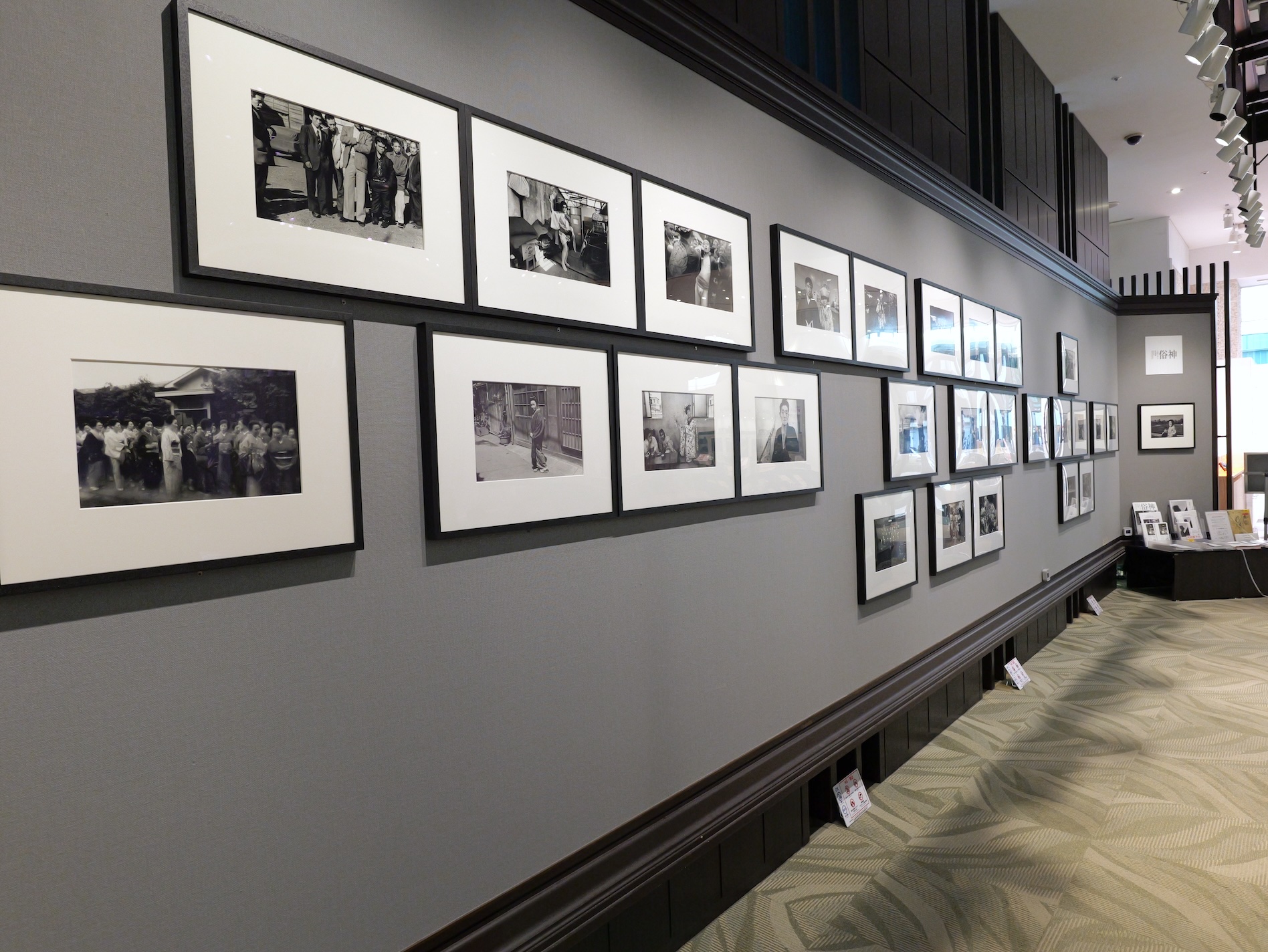
Along with the prints, both editions of the Zokushin photobook are on display. Personally, compared to the 1976 original, I actually prefer the 2004 Tosei-sha edition due to its printing (much nicer grays!) and binding. Not only that, the introspective essay at the end is brilliant. It noted then (2004) that the people found in Zokushin are gone- times change. And in a time of change, this exhibition offers viewers tantalizing evidence of an age and culture that has vanished- or rather, was extinguished by convenience and economics.
Tsuchida’s documentation only grows deeper in importance.
With a generous three-month showing, there is no reason to miss this one. (I’ve already been three times.)
プリントとともに、写真集『俗神』が2種類展示されていまする。個人的には、1976年のオリジナル版と比べると、印刷(よりきれいなミッドトーン!)と装丁の点で、2004年刊行の東成社版の方が好きです。それだけでなく、巻末の内省的なエッセイも素晴らしいものです。『俗神』に登場する人たちはもういない−時代は変わるのだ、と書いてあります。変化の時代にありながら、この展覧会は、便利さと経済によって消滅してしまった時代と文化の、ゾクゾクするような証拠を見る者に感じさせてくれます。展示期間は3ヶ月です、これを見逃す理由はありません(私はすでに3回行っています!)。
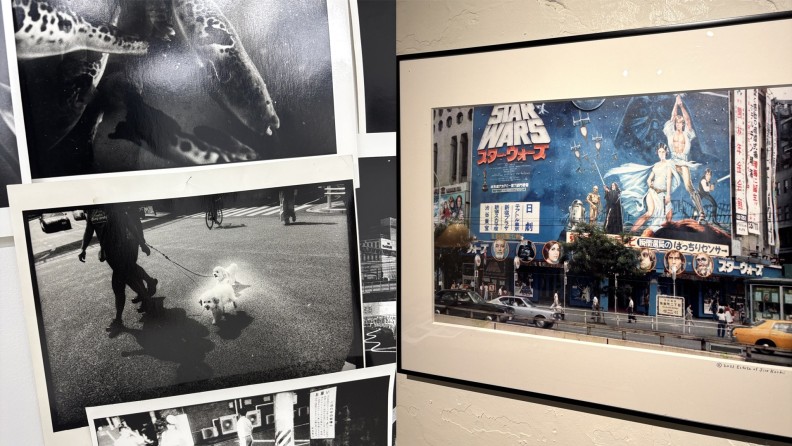 Vol.41 中嶋琉平|Ryuhei Nakashima「Asia, New York, and Tokyo」、高地二郎|Jiro Kochi「GINZA: Through the eye of a Salaryman 1950-1990」
2025/11/08
Vol.41 中嶋琉平|Ryuhei Nakashima「Asia, New York, and Tokyo」、高地二郎|Jiro Kochi「GINZA: Through the eye of a Salaryman 1950-1990」
2025/11/08
 Vol.40 藤岡亜弥|Aya Fujioka「Life Studies」、荒木塁|Lui Araki 「Color/Scape」
2025/10/03
Vol.40 藤岡亜弥|Aya Fujioka「Life Studies」、荒木塁|Lui Araki 「Color/Scape」
2025/10/03
 Vol.39 榎本八千代|Yachio Enomoto「家族写真 / Family Photo」
2025/09/05
Vol.39 榎本八千代|Yachio Enomoto「家族写真 / Family Photo」
2025/09/05
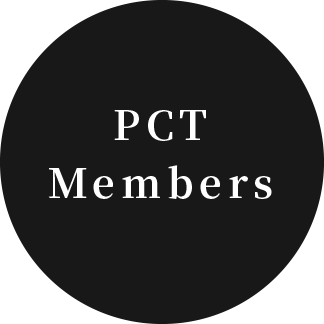
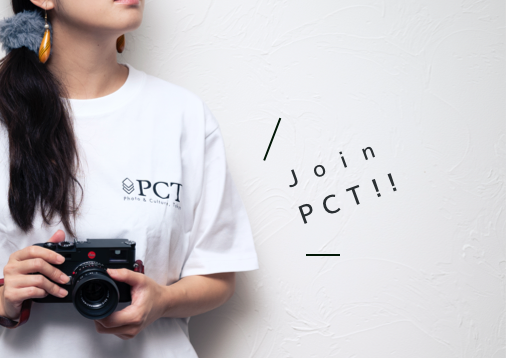
PCT Membersは、Photo & Culture, Tokyoのウェブ会員制度です。
ご登録いただくと、最新の記事更新情報・ニュースをメールマガジンでお届け、また会員限定の読者プレゼントなども実施します。
今後はさらにサービスの拡充をはかり、より魅力的でお得な内容をご提供していく予定です。
 「Photo & Culture, Tokyo」最新の更新情報や、ニュースなどをお届けメールマガジンのお届け
「Photo & Culture, Tokyo」最新の更新情報や、ニュースなどをお届けメールマガジンのお届け 書籍、写真グッズなど会員限定の読者プレゼントを実施会員限定プレゼント
書籍、写真グッズなど会員限定の読者プレゼントを実施会員限定プレゼント